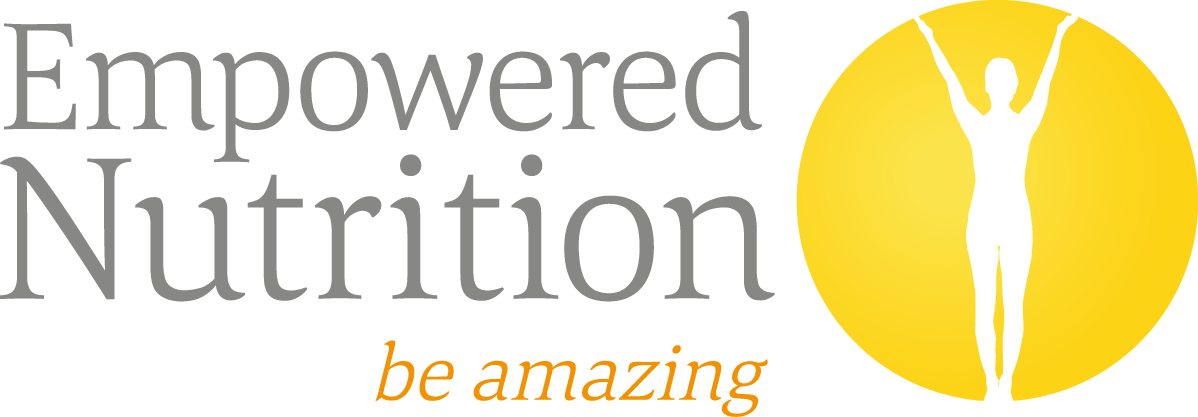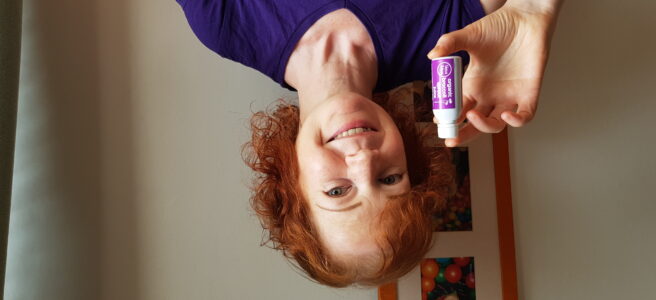As a breast cancer thriver as well as a registered nutritional therapist, it shouldn’t come as a surprise to learn that I have a special interest in working with women with or after breast cancer. From a prevention point of view, I also love to work with women with hormone imbalances to restore balance and reduce cancer risk. Despite the fact that the diagnosis is often a shock, from a naturopathic or functional medicine perspective breast cancer does not suddenly appear out of nowhere. There will have been imbalances in the body for many years before the cancer is detected, even if the person with cancer is unaware of them.
My job in supporting someone who has had a diagnosis of breast cancer is to identify systems in the body that have become out of balance and to provide the conditions for the body that allow it to return itself to balance. To do this, I always work with food first, but sometimes higher concentrations of nutrients are required. This is where broccoli sprouts and broccoli sprout juice can be valuable in providing therapeutic amounts of nutrients, as I will explain.
Oestrogen and cancer
Breast cancer, like all cancers, is a complex, multifactorial disease. This means that many factors are usually involved in its development. These could be as diverse as the disruption to circadian rhythms caused by working shifts, nutrient deficiencies, poor detoxification capabilities, insulin resistance and many more. One factor which gets a lot of attention, and rightly so, is the role of the female hormone oestrogen in the development of cancer.
Approximately 80% of breast cancers are oestrogen receptor positive. This means that the cancer cells have extra oestrogen receptors. Oestrogen can fit onto the receptors like a key fits into a lock, and this promotes uncontrolled cell growth – a hallmark of cancer. This is well known, and women with oestrogen receptor positive breast cancers will often be offered hormone treatments which either block production of oestrogen or prevent it from docking onto the receptors. What is less well known is that even in hormone receptor negative cancers, oestrogen can also be a driver of cancer growth due to its presence in the tumour microenvironment (1). Regardless of whether or not a woman is taking hormone therapy, supporting a healthy hormone balance using food is still important because drug resistance is common.
Women are meant to have oestrogen in their bodies. During the childbearing years, most of this is produced by the ovaries. After the menopause, the adrenal glands will produce some oestrogen and more is produced by fat cells in a process called aromatisation. Yet oestrogen can drive cancer growth – is this a female design fault? No, we need to look into it more deeply.
Oestrogen exists in more than one form in the body. Oestradiol is the strongest form, produced by the ovaries. Then there is oestrone, which is the dominant form after the menopause, and oestriol, a weak form that is present in high amounts during pregnancy. On top of these naturally occurring oestrogens, other oestrogens that are also present in the body include:
- Phytoestrogens: compounds from plant foods such as soy or flax that act like weak oestrogens in the body
- Xenoestrogens: chemicals which act like very strong oestrogens in the body – the list of cheicals which act like oestrogens is long and includes parabens, phthalates, bisphenols, pesticides, herbicides, dioxins
- Synthetic oestrogens such as those from hormonal contraceptives, either taken by the woman or that make their way into the water supply
- Oestrogens found in animal products, particularly dairy products
There were very few xenoestrogens or synthetic oestrogens in the environment prior to World War II (2), whereas humans have evolved with phytoestrogens.
The role of the liver
Oestrogens have to be metabolised (converted) by the liver before being eliminated from the body, and this is where it gets interesting (well, to a science geek like me anyway!). Liver metabolism has two phases, imaginatively called Phase I and Phase II. In phase I, oestrogens are converted into various intermediary metabolites, and in phase II these metabolites get attached to molecules which carry them out of the body. Phase I metabolism is carried out by a family of liver enzymes called cytochrome P450, or CYP enzymes. Depending on which enzymes are favoured by the body, the resulting oestrogen metabolites could be:
- 2-hydroxyestrone – a very weak oestrogen which may even be protective against hormone-dependent cancers
- 4-hydroxyestrone – a potential carcinogenic oestrogen, due to its ability to cause DNA damage
- 16α-hydroxyestrone – another potent oestrogen which can initiate tumour growth
Cruciferous vegetables – indoles
The important point to note from a nutritional therapy perspective is that the food that we eat can influence which enzymes are preferred in Phase I oestrogen metabolism. This means that we can encourage 2-hydroxyestrone and discourage the more harmful metabolites. Compounds called indoles which are found in cruciferous vegetables upregulate the CYP enzyme that metabolises oestrogen to the safer 2-hydroxyestrone (3). Eating cruciferous vegetables can reduce the amount of harmful oestrogen metabolites! Indoles (such as indole-3-carbinol) also have other anti-cancer benefits, which are not oestrogen-related:
- They encourage apoptosis (cancer cell suicide) (4)
- They are anti-angiogenic (prevent cancer cells from establishing an independent blood supply) (5)
- They reduce inflammation (6)
- They stop cancer cells from dividing by stopping the cell cycle (5)
Cruciferous vegetables and the mighty sulphoraphane
Phase II, in which oestrogen metabolites are joined to another molecule in order to be eliminated from the body, can also be influenced by food. Consider cruciferous vegetables again. They contain compounds called glucosinolates. When glucosinolates are chopped or chewed, an enzyme called myrosinase converts them to isothiocyanates. One particularly significant isothiocyanate is called sulphoraphane. Sulphoraphane powerfully upregulates phase II liver enzymes which can result in toxic oestrogen metabolites being carried out of the body (7).
 So here we have a class of vegetables (the cruciferous, or brassica family) that both influence phase I enzymes so that harmful oestrogen metabolites are reduced, and induce phase II enzymes so that used oestrogens are safely carried out of the body.
So here we have a class of vegetables (the cruciferous, or brassica family) that both influence phase I enzymes so that harmful oestrogen metabolites are reduced, and induce phase II enzymes so that used oestrogens are safely carried out of the body.
Sulphoraphane also has many anticancer actions that are not related to oestrogen. It affects cancer cell signalling and proliferation, is anti-angiogenic, antibacterial, antiviral and anti-inflammatory. Through its activation of the Nrf2 pathway, sulphoraphane affects the expression of over 200 genes, many of which protect our cells against damage. (8)
An additional benefit of the compound sulphoraphane is how it works to optimise the effects of breast cancer hormone therapy. It is common for cancer cells to eventually become resistant to hormone therapy, be it Tamoxifen, Fulverstrant, or an aromatase inhibitor. Not only does sulphoraphane make cancer cells more sensitive to treatment in the first place (9), but it can reverse acquired resistance to hormone therapy (10). A pharmaceutical form of sulphoraphane is being developed for this purpose, which was shown in a trial to reverse resistance in 26% of women with stage 4 breast cancer who had previously been resistant to hormone therapy (11). It can take a long time before a trial drug is actually available to patients, but read on to find out what you can take now to get plenty of sulphoraphane in its natural form.
Cruciferous vegetables include broccoli, Brussels sprouts, cabbage, cauliflower, kale, pak choi, radish, rocket and watercress. They are very valuable to include in the diet daily to improve oestrogen detoxification, and to support the liver generally. However, it can be challenging to eat enough cruciferous vegetables to have a therapeutic effect. To complicate things, cooking destroys sulphoraphane, whereas some raw cruciferous vegetables (such as kale) contain substances called goitrogens that might impair thyroid function in some cases. This is where broccoli sprouts come in.
What are broccoli sprouts?
Broccoli sprouts are the first shoots that appear when you begin to grow broccoli from seed. With watering, they only take 3-4 days to grow. The remarkable thing about broccoli sprouts is that they contain 10-100 times as much sulphoraphane as the same weight of a mature broccoli plant! (12) However, broccoli sprouts contain virtually none of the goitrogenic compounds that can impair thyroid function.
Sprouting broccoli seeds is easy and very cheap. I use a multi-tiered tray to spread the seeds on but you can also sprout seeds in a jar. I place the tray on a windowsill and rinse the seeds in water at least twice a day. They sprout faster in warmer weather than in colder weather, but usually they are ready to eat, with peak glucosinolate content, in 3-4 days. Broccoli sprouts have a pleasant peppery taste and are good sprinkled on top of salads or stir fries. Remember that you need to chew them well so that the glucosinolates get converted to sulphoraphane.

Whilst broccoli sprouts are nutritious and cheap, it requires some discipline and space to keep a production line going so that you have enough sprouts to eat daily (100g is a good therapeutic dose). If you think that you might not be organised enough but would still like to get the nutritional and hormone-balancing benefits of broccoli sprouts, then I often recommend the broccoli sprout juice made by Vegus Juices.
Broccoli sprout juice
 I like this product for several reasons. My first consideration is always the quality of the product. Vegus Juices grow their organic sprouts carefully, rinsing them every 5 minutes to prevent any mould from growing. They are juiced using a cold-pressed, masticating juicer at 4 days old. The juicing process releases the crucial myrosinase enzyme, turning the glucosinolates into sulphoraphane. They are then preserved using high pressure treatment rather than high temperature treatment – this actually increases the sulphoraphane content whilst preserving the enzymatic activity. It also results in a product that is very convenient as it does not need to be refrigerated, and it comes in handy single serving size bottles. Each serving contains the equivalent of 1.3kg of broccoli sprouts – that’s a lot! Drinking one of these juice bottles daily is a foolproof way of ensuring that you get a therapeutic dose of sulphoraphane as well as indoles.
I like this product for several reasons. My first consideration is always the quality of the product. Vegus Juices grow their organic sprouts carefully, rinsing them every 5 minutes to prevent any mould from growing. They are juiced using a cold-pressed, masticating juicer at 4 days old. The juicing process releases the crucial myrosinase enzyme, turning the glucosinolates into sulphoraphane. They are then preserved using high pressure treatment rather than high temperature treatment – this actually increases the sulphoraphane content whilst preserving the enzymatic activity. It also results in a product that is very convenient as it does not need to be refrigerated, and it comes in handy single serving size bottles. Each serving contains the equivalent of 1.3kg of broccoli sprouts – that’s a lot! Drinking one of these juice bottles daily is a foolproof way of ensuring that you get a therapeutic dose of sulphoraphane as well as indoles.
(Disclaimer: sulphoraphane in the high doses obtained from broccoli sprout juice has a strong antioxidant effect and may affect the metabolism of certain prescription drugs. Always check with your nutritional therapist or naturopath for any interactions with your prescription medications and for the suitability of broccoli sprout juice for your individual situation.)
This has been an in-depth blog post, so thank you for reading this far! In summary, broccoli sprouts contain compounds which support the liver to metabolise oestrogen safely, act against cancer in multiple ways, and are even being researched as a way to delay resistance to breast cancer hormone treatment. Broccoli sprouts are a safer and more concentrated source of sulphoraphane than other cruciferous vegetables, but if you are not able to keep a production line of sprouts running, then Vegus organic broccoli sprout juice is an easier way to get all the benefits of this superfood.
References
- Den Boon, J.A., Pyeon, D., Wang, S.S. et al. (2015). ‘Molecular transitions from papillomavirus infection to cervical precancer and cancer: Role of stromal estrogen receptor signaling’, Proceedings of the National Academy of Sciences of the United States of America, 112(25), E3255-E3264. Available at http://www.pnas.org/content/112/25/E3255.full (Accessed 15 July 2020).
- Soto, A.M. and Sonnenschein, C. (2010). ‘Environmental causes of cancer: endocrine disruptors as carcinogens’, Nature Reviews Endocrinology, 6(7), p363-370. Available at https://www.ncbi.nlm.nih.gov/pmc/articles/PMC3933258/ (Accessed 15 July 2020).
- Michnovicz, J.J., Adlercreutz, H. and Bradlow, H.L. (1997). ‘Changes in Levels of Urinary Estrogen Metabolites After Oral Indole-3-Carbinol Treatment in Humans’, Journal of the National Cancer Insitute, 89(10), pp718-723. Available at http://jnci.oxfordjournals.org/content/89/10/718.long (Accessed 15 July 2020).
- Howells, L.M., Gallacher-Horley, B., Houghton, C.E. et al. (2002). ‘Indole-3-carbinol Inhibits Protein Kinase B/Akt and Induces Apoptosis in the Human Breast Tumor Cell Line MDA MB468 but not in the Nontumorigenic HBL100 Line ‘, Molecular Cancer Therapeutics, 1(13), pp1161-1172. Available at http://mct.aacrjournals.org/content/1/13/1161.long (Accessed 15 July 2020).
- Chang, X., Tou, J.C., Hong, C. et al. (2005). ‘3,3′-Diindolylmethane inhibits angiogenesis and the growth of transplantable human breast carcinoma in athymic mice’, Carcinogenesis, 26(4), pp771-778. Oxford Journals. Available at http://carcin.oxfordjournals.org/content/26/4/771.long (Accessed 15 July 2020).
- Fuentes, F., Paredes-Gonzalez, X and Kong, A.T. (2015). ‘Dietary Glucosinolates Sulforaphane, Phenethyl Isothiocyanate, Indole-3-Carbinol/3,3′-Diindolylmethane: Anti-Oxidative Stress/Inflammation, Nrf2, Epigenetics/Epigenomics and In Vivo Cancer Chemopreventive Efficacy’, Curr Pharmacol Rep., 1(3), pp179-196. Available at https://www.ncbi.nlm.nih.gov/pmc/articles/PMC4596548/ (Accessed 15 July 2020).
- Fahey, J.W. and Talalay, P. (1999). ‘Antioxidant functions of sulforaphane: a potent inducer of Phase II detoxication enzymes’, Food and Chemical Toxicology, 37(9-10), pp973-979. Available at https://shermantree.it/wp-content/uploads/2019/04/Antioxidant-functions-of-sulforaphane-a-potent-Inducer-of-phase-II-detoxication-enzymes.pdf (Accessed 16 July 2020).
- Tortorella, S.M., Royce, S. G., Licciardi, P.V et al. (2015). ‘Dietary Sulforaphane in Cancer Chemoprevention: The Role of Epigenetic Regulation and HDAC Inhibition’, Antioxidants & Redox Signalling, 2(16), pp1382-1424. Available at https://www.ncbi.nlm.nih.gov/pmc/articles/PMC4432495/ (Accessed 15 July 2020).
- Pawlik, A., Slominska-Wojewodzka, M. and Herman-Antosiewicz, A. (2016). ‘Sensitization of estrogen receptor-positive breast cancer cell lines to 4-hydroxytamoxifen by isothiocyanates present in cruciferous plants’, European Journal of Nutrition, 55, pp1165-1180. Available at https://www.ncbi.nlm.nih.gov/pmc/articles/PMC4819954/ (Accessed 29 June 2020).
- Kettner, N. M., Vijayaraghavan, S., Durak, M.G. et al. (2019). ‘Combined Inhibition of STAT3 and DNA Repair in Palbociclib-Resistant ER-Positive Breast Cancer’, Clinical Cancer Research, 25(13), pp3996-4013. Available at https://pubmed.ncbi.nlm.nih.gov/30867218/ (Accessed 29 June 2020).
- Howell, S.J., Campone, M., Cortes, J. et al. (2019). ‘Final results of the STEM trial: SFX-01 in the treatment and evaluation of ER1 Her2- metastatic breast cancer (mBC)’, Annals of Oncology, 30(S5). Available at https://www.annalsofoncology.org/article/S0923-7534(19)58563-5/pdf (Accessed 29 June 2020).
- Fahey, J.W., Zhang, Y. and Talalay, P. (1997). ‘Broccoli sprouts: An exceptionally rich source of inducers of enzymes that protect against chemical carcinogens’, Proceedings of the National Academy of Sciences of the United States of America, 94(19), pp10367-10372. Available at https://www.ncbi.nlm.nih.gov/pmc/articles/PMC23369/ (Accessed 15 July 2020).

